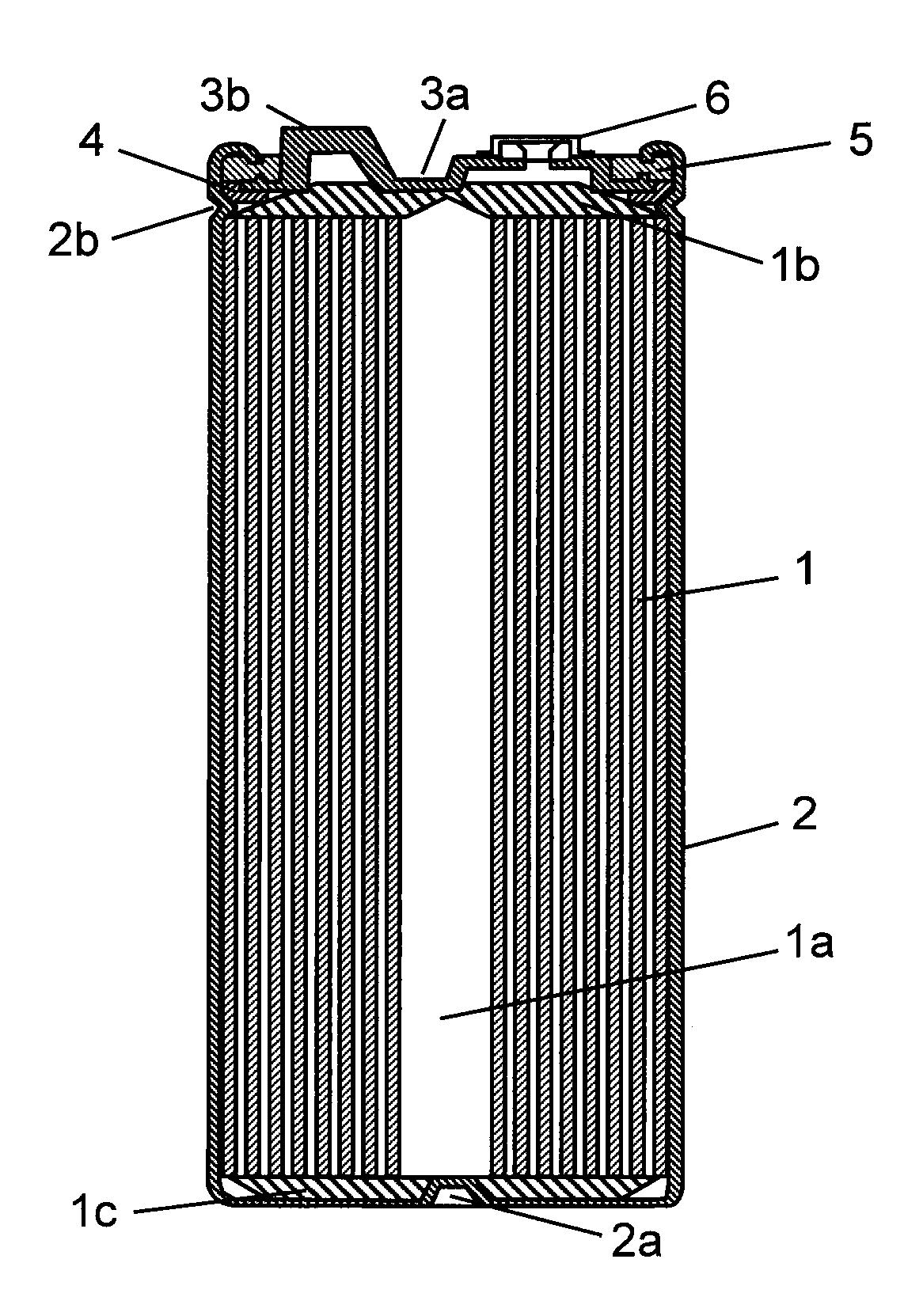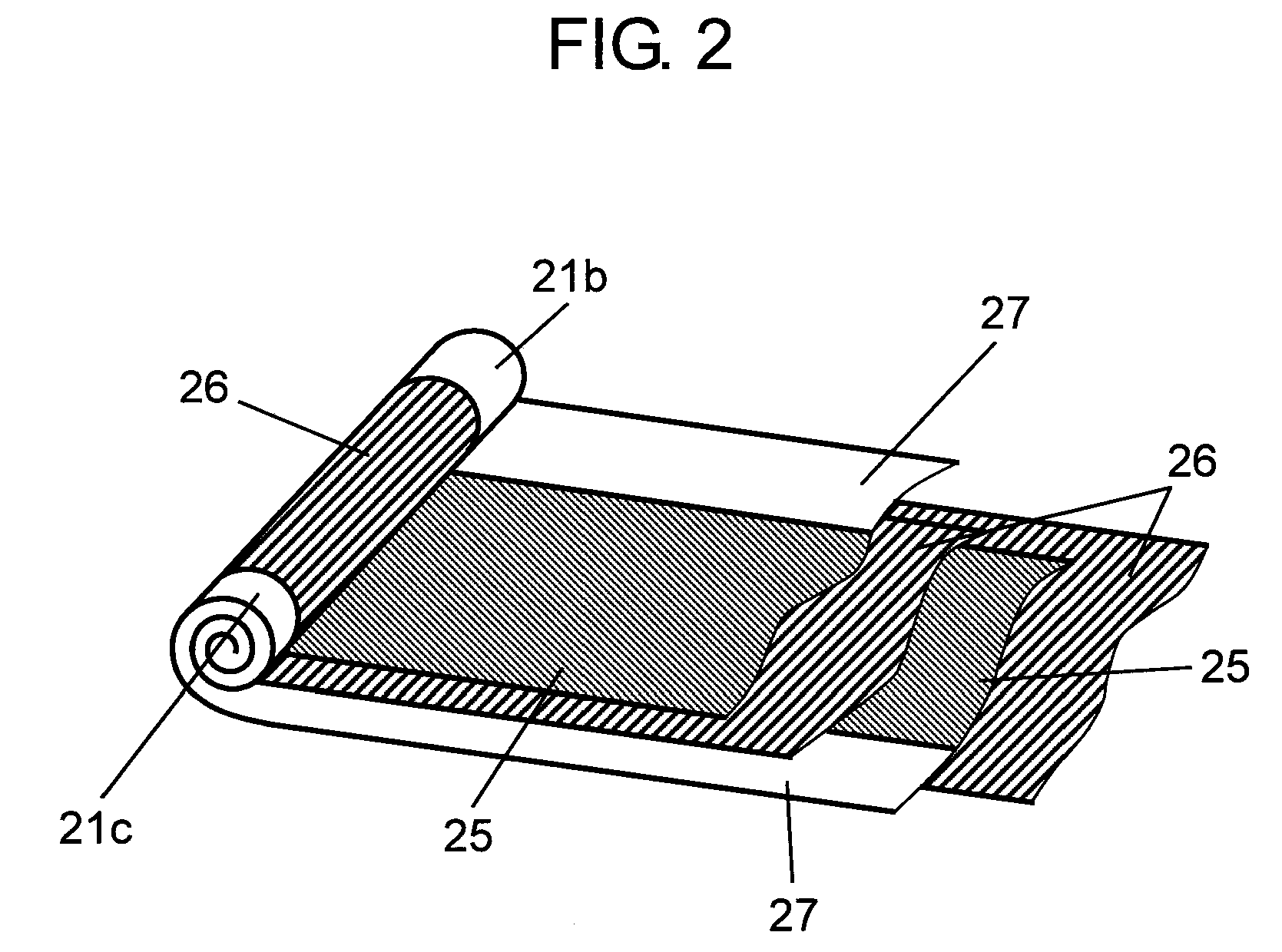Capacitor
a capacitor and capacitor technology, applied in the field of capacitors, can solve the problems of insufficient welding points to increase the resistance of extracting an electrode, the quality of laser welding is susceptible to the extent, and the strength of the joining state after laser welding cannot be controlled, so as to achieve the effect of superior reliability, easy crushing, and stable joint parts
- Summary
- Abstract
- Description
- Claims
- Application Information
AI Technical Summary
Benefits of technology
Problems solved by technology
Method used
Image
Examples
case 2
[0036]Metal case 2 is a bottomed, cylindrical case made of aluminum containing element 1 together with a driving electrolyte (not shown). Joint part 2a provided so as to convexly project in a strip shape on the inner bottom surface of this metal case 2 crushes cathode electrode 1c provided on one end face of element 1 inserted into metal case 2. This joint part 2a is laser-welded by being irradiated with laser light from the outside to join metal case 2 to cathode electrode 1c of element 1 mechanically and electrically.
[0037]Terminal plate 3 made of aluminum has joint part 3a placed so as to project in a strip shape roughly in the center of the inner surface of terminal plate 3 and terminal 3b for external connection. Joint part 3a crushes anode electrode 1b placed on the other end face of element 1, and this joint part 3a is laser-welded by being irradiated with laser light from the outside to join joint part 3a mechanically and electrically to extract the positive electrode of ele...
PUM
 Login to View More
Login to View More Abstract
Description
Claims
Application Information
 Login to View More
Login to View More - R&D
- Intellectual Property
- Life Sciences
- Materials
- Tech Scout
- Unparalleled Data Quality
- Higher Quality Content
- 60% Fewer Hallucinations
Browse by: Latest US Patents, China's latest patents, Technical Efficacy Thesaurus, Application Domain, Technology Topic, Popular Technical Reports.
© 2025 PatSnap. All rights reserved.Legal|Privacy policy|Modern Slavery Act Transparency Statement|Sitemap|About US| Contact US: help@patsnap.com



